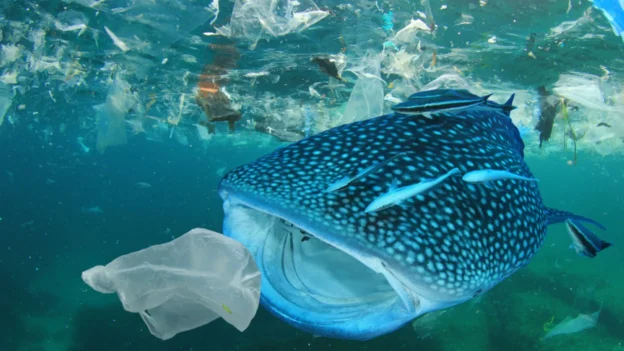A recent European study has revealed an alarming presence of nanoplastics in the North Atlantic. It is estimated that 27 million tons of these tiny plastic particles, less than one micron in size, pollute the region, from surface waters to depths of more than 4,500 meters.
The detection of millions of nanoplastics
The research, led by the Helmholtz Center for Environmental Research(UFZ), Utrecht University and the Royal Netherlands Institute for Marine Research, relied on innovative technology to detect these previously undetected materials.
The team used a mass spectrometry and thermal desorption technique to identify nanoplastics in samples collected aboard the RV Pelagia on a voyage between Europe and the North Atlantic subtropical gyre. This methodology makes it possible to detect the “chemical fingerprint” of each type of plastic when heated, releasing characteristic gaseous compounds.
The most commonly identified polymers were PET(used in packaging and textiles), PVC PVC(used in tubes and cards) and PS (typical of packaging and disposable utensils). PET was found even in the deepest layers, suggesting that synthetic fibers released during laundry could be a source of contamination.
Interestingly, neither polyethylene nor polypropylene was detected, despite their wide commercial use. This could be due to their physical properties, which facilitate their floating or degradation in other environments.
The nanoplastics can reach the sea through the atmosphere, rainfall or rivers, which carry waste from urban and industrial areas. Once in the ocean, subtropical gyre currents act as natural traps that concentrate floating debris and encourage its fragmentation into smaller and smaller particles.
While global attention has focused on microplastics and larger debris, the study shows that nanoplastics represent the dominant fraction in both quantity and mass. These ultrafine particles can cross biological barriers and reach internal tissues of marine organisms, with possible human health effects still under investigation.
Follow us on social networks and don’t miss any of our publications!
YouTube LinkedIn Facebook Instagram X (Twitter) TikTok
Source and photo: Nature

